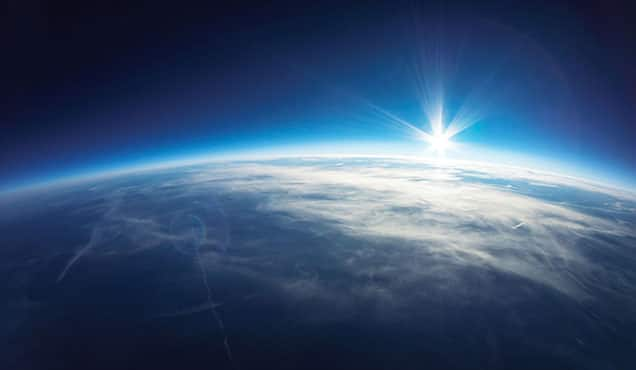
Key points:
- The US government aims to reduce its dependence on China for
its battery anode materials, particularly graphite, a key material
in lithium-ion batteries for electric vehicles (EVs). - 77% of the world’s graphite production comes from China, with
the US importing 42% of its graphite supply from China. - The US introduced the 2022 Inflation Reduction Act,
incentivizing companies to build local EV battery supply
chains. - On Dec. 1, 2023, the US government released guidance on the
foreign entity of concern (FEOC), which restricts federal tax
credits for EVs using batteries or materials primarily sourced from
China. - North American graphite supply chains are broadening, with
companies like Westwater Resources, Panasonic Energy, and Nouveau
Monde Graphite signing offtake agreements and increasing production
capacity.
There are many topics debated in the lithium-ion battery anode
market. For example, which cathode chemistry is most appropriate
for which application be it nickel, cobalt, manganese or iron in
varying ratios with lithium. Rarely up for debate, however, is the
battery anode material. That’s because it’s almost always
graphite.
US facing challenges in its attempts to diversify its
graphite supply chain
The problem for the auto industry is that the US government is
trying to build a resilient electric vehicle (EV) supply chain that
levers away mainland China’s influence on the EV battery supply
chain. When it comes to graphite, this is a big problem, albeit not
insurmountable. Mainland China is the world’s largest graphite
producer, producing 77% of the world’s graphite demand in 2023,
with the US importing 42% of its graphite requirements from
China.US graphite demand gets to the crux of the problem — it
imported 84,000 metric tons of graphite, while consuming 76,000
metric tons, meaning its production is negligible.
This has never been a problem until the US introduced the 2022
Inflation Reduction Act, a program stacked high with incentives for
companies to build local EV supply chains. This was further
magnified on Dec. 1, 2023, when the US government released guidance
on the foreign entity of concern (FEOC), which listed four
countries — the People’s Republic of China (PRC), the Russian
Federation, the Democratic People’s Republic of North Korea and the
Islamic Republic of Iran. The mandate added a new layer of FEOC
requirements, pulling away the eligibility of EVs powered by
batteries made primarily in China or using materials that are
extracted and/or processed in China from qualifying for federal tax
credits of up to $7,500.
Coincidentally on the same day,
China imposed a temporary measure for companies exporting
graphite. China’s move is expected to hit the graphite supply
to nations that are heavily dependent on it, including the US,
Japan, South Korea, Europe and other regions. China also refines
more than 90% of the graphite globally.Fast developments in
Canada and US graphite supply deals
The response in North America has been lightning-fast. At least
five high-profile developments over the last fortnight hint that
the North American graphite supply chains are beginning to
work.
- On Feb. 5,
Westwater Resources signed its first graphite offtake agreement
with South Korean battery manufacturer SK On for a 34,000 metric
ton natural graphite supply from its under-construction Kellyton,
Alabama, plant. - On Feb. 9,
Panasonic Energy signed a binding offtake agreement with
Australia’s NOVONIX to procure synthetic graphite from its
Tennessee plant. - On the same day, another Australia-based natural graphite
supplier
Syrah Resources commenced operations at its 11.25 kiloton per
annum (ktpa) natural graphite production[LA4] facility in
Vidalia, Louisiana. - This was followed by two big announcements by the Canadian
mining company
Nouveau Monde Graphite (NMG) on Feb. 15. It signed offtake
agreements with General Motors (GM) and Panasonic Energy to supply
18,000 metric tons of anode active materials (AAM) per annum to
each as well as raising new equity investments from both
companies.
Projected Graphite demand, 2023-2030
According to S&P Global Mobility, global demand for AAM
materials, mainly the graphite industry, will grow to 3,100
kilotons by 2030, from 790 kilotons in 2023. Particularly in North
America, graphite demand will grow at a faster rate, with expected
volumes to reach 620 kilotons in 2030 from 56 kilotons in 2023.
“The recent guidance on the FEOC designation disqualifies
batteries that utilize materials produced in China at any stage of
their processing. This stringent requirement has compelled American
automobile and battery manufacturers to rush to secure their
graphite supply from FEOC-qualified sources. However, the
feasibility of decoupling from China remains uncertain due to
China’s extensive monopoly over the graphite supply chain, its cost
competitiveness and the fact that most anode projects in North
America are still in the developmental phase,” explains S&P
Global Mobility’s senior research analyst Ali Adim.
This article was published by S&P Global Mobility and not by S&P Global Ratings, which is a separately managed division of S&P Global.
- SEO Powered Content & PR Distribution. Get Amplified Today.
- PlatoData.Network Vertical Generative Ai. Empower Yourself. Access Here.
- PlatoAiStream. Web3 Intelligence. Knowledge Amplified. Access Here.
- PlatoESG. Carbon, CleanTech, Energy, Environment, Solar, Waste Management. Access Here.
- PlatoHealth. Biotech and Clinical Trials Intelligence. Access Here.
- Source: http://www.spglobal.com/mobility/en/research-analysis/us-graphite-supply-chain-expansion-dimming-import-needs.html



